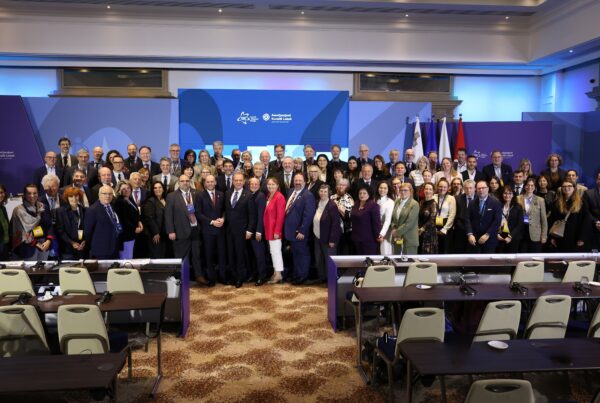Analysis of the EU budget proposal of the European Commission: time to raise the voice of local and regional governments
On 16 July, the European Commission unveiled its proposals for the next EU long term budget: the Multiannual Financial Framework (MFF) for 2028-2034. This proposal represents a significant shift in the EU’s approach and governance to its long-term budget. While the Commission is proposing an overall budget increase compared to the current period, investment priorities are being substantially reshaped.
There is a marked shift towards funding for defence and security, as well as for competitiveness and support for European businesses and industries. However, this change comes at the expense of traditional EU policies such as Cohesion Policy and the Common Agricultural Policy (CAP), which have long provided relevant funding to local and regional governments for structural investments in their communities.
In this context, the coming months will be crucial. CEMR and its members will engage with decision makers in the European Council and the European Parliament to ensure that local and regional governments are not sidelined in the negotiations.
These are the key areas for which CEMR will be advocating in the coming months:
1. Multi-level governance and funding for Cohesion Policy
The Commission proposes a major restructuring of all shared management funds, including Cohesion Policy, CAP, Common Fisheries Policy, and funding instruments for internal security, border management, asylum and migration. All these funds would now be brought together under comprehensive ‘National and Regional Partnership Plans’.
The proposed MFF represents a major turning point for the role of cities and regions in delivering economic, social, and territorial cohesion. While Member States may still choose to collaborate with local and regional governments as Managing Authorities – as currently practised under Cohesion Policy – the new framework grants them broader discretion in setting investment priorities. This increased flexibility, however, comes with a clear risk: a shift toward greater centralisation of funding decisions at both the European and national levels. Such a trend could weaken the place-based approach and marginalise the very actors – our cities and regions – who are best positioned to respond to local needs and deliver tangible results on the ground.
Another major concern is the reduced financial weight given the cohesion objectives. The proposed national and regional funding now merge resources from cohesion policy funds, CAP, fisheries, and other programme objectives (e.g. LIFE, Social Climate Fund), diluting the funding explicitly dedicated to economic, social, and territorial cohesion. CEMR estimates that Cohesion Policy could shrink to just 20% of the total EU budget, compared to nearly one-third in the current MFF. In addition, repayment of Next Generation EU has been integrated in the MFF first heading together with the national and regional partnership plans, which could raise an issue of additional decrease in this budget in case of increased interest rates.
2. Acknowledging the role of local and regional governments in competitiveness
The main spending priority in the European Commission proposal is competitiveness, with a focus on the new European Competitiveness Fund, a strengthened Horizon Europe programme, and flagship EU initiatives such as Erasmus +.
Local and regional governments are crucial drivers of economic and social ecosystems at the local level, leading innovation and fostering local economic development. Many municipalities and regions have already benefited from the Horizon programme. It will therefore be essential to clearly identify local and regional governments as key beneficiaries in order to achieve the dual objective of cohesive competitiveness.
Likewise, the increased focus on defence and security must be matched by a recognition of the role local and regional authorities play in securing resilient infrastructure and essential public services, including civil protection and crisis preparedness. This role must be reflected in both national and regional budget allocations, as well as in EU direct fundings.
3. Consistent approach in the role of local and regional in the Global Europe pillar
CEMR and PLATFORMA welcome the attention given to local governments in the proposed Global Europe regulation, particularly their inclusion in consultation, engagement, and capacity-strengthening in line with their respective mandate, as well as the support foreseen for local authority networks and alliances in Europe and partner countries.
However, this recognition is not applied consistently across all geographic pillars. It is notably absent for candidate and potential candidate countries, including Ukraine, and for the neighbourhood countries East and South. Furthermore, the regulation overlooks the potential of decentralised (city-to-city and region-to-region) cooperation as a proven modality to empower local authorities in partner countries, provide local public services for the populations, localise the Sustainable Development Goals of the 2030 Agenda, and create an enabling environment for Global Gateway investments and for civil society organisations.
As inter-institutional negotiations begin, CEMR will actively engage with EU institutions, building on existing coalitions such as the Local Alliance and the Cohesion Alliance to amplify the messages of united local and regional governments in Europe.
Note: This is an initial analysis of the proposal presented by the European Commission. CEMR will provide its members with a more in-depth assessment in the coming weeks, once all the regulations have been thoroughly reviewed.

Director – Policy & Impact






